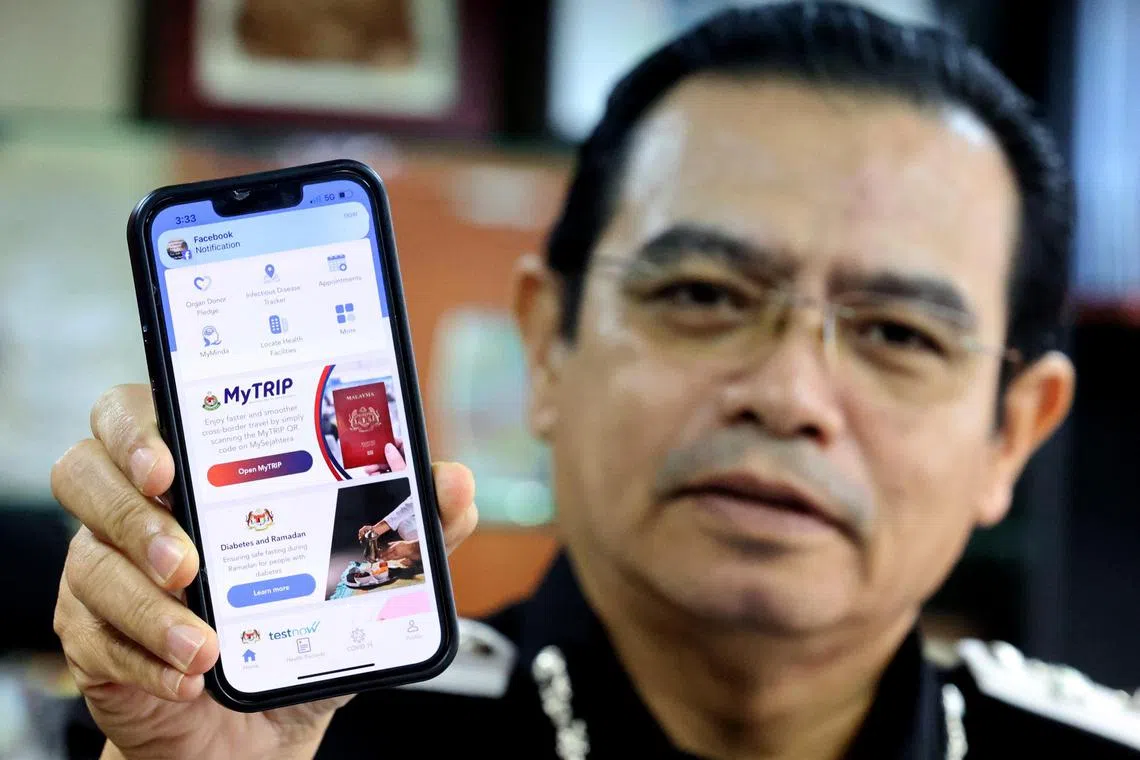70,000 people opt for new immigration clearance QR code method to cross Johor-Singapore border
Sign up now: Get insights on the biggest stories in Malaysia

Johor Immigration Department acting director Mohd Faizal Shamsudin said the 70,000 figure was clear indication of travellers’ enthusiasm for the new system.
PHOTO: THE STAR/ASIA NEWS NETWORK
Follow topic:
JOHOR BAHRU - The QR code system for Malaysian travellers has seen encouraging response, with nearly 70,000 people registering to use the trial system aimed at expediting immigration clearance at the border crossings with Singapore.
As at press time, one of the applications, known as MyTrip and embedded within the MySejahtera mobile app, has been functioning well without any major hiccups on the first day of the proof-of-concept period that began on June 1.
It has been successfully tested at the Sultan Abu Bakar Customs, Immigration and Quarantine Complex (KSAB).
However, at the time of reporting, similar QR code applications at Bangunan Sultan Iskandar CIQ complex (BSI) had yet to start due to technical glitches.
Despite the delay, there was no major congestion at either land checkpoint with Singapore, as commuters can still use alternative methods such as manual counters, e-gates and MBike lanes.
Johor Immigration Department acting director Mohd Faizal Shamsudin said the substantial registration figure was a very clear indication of travellers’ enthusiasm for testing the new immigration clearance method.
“The first day of the proof-of-concept period went smoothly at KSAB,” he said.
“Although there are other means to clear immigration, a majority of bus passengers at the KSAB opted to use the QR code method,” he said, after accompanying Home Ministry and Immigration Department senior officials in touring the KSAB on June 1.
Acknowledging minor issues during the proof of concept, Mr Mohd Faizal assured the public of ongoing improvements before the full system is deployed. He thanked travellers for their cooperation and patience, emphasising the presence of Immigration Department officers and the vendor at the complex to assist users.
Mr Mohd Faizal said the QR code system could reduce the clearance time for a bus full of passengers at KSAB by more than 75 per cent.
“The new system will allow us to clear a whole bus with an average of about 20 passengers in less than five minutes.
“That is, if all of them use the QR code system instead of the manual counters or e-gates,” he said, reminding those using the new system to always carry their passports with them.
Regarding the delay in the QR code implementation at BSI, Mr Mohd Faizal attributed it to technical glitches that were being rectified.
“We will make the appropriate announcement on the implementation to the public as soon as everything is ready,” he said, adding that during the proof of concept, they planned to test at least three different QR code systems before deciding on the best option.
Deputy Prime Minister Fadillah Yusof previously announced the three-month proof of concept
Checks at KSAB found that a majority of bus passengers opted to use the dedicated lanes for the new QR code system, though minor issues were observed in the motorcycle lanes.
Six lanes were designated for bus passengers, and an additional 10 lanes for motorcyclists.
Also present during the tour of the checkpoints were Home Ministry deputy secretary-general of policy and control Zamri Mat Zain, Immigration Department deputy director-general Ismail Mokhtar, Johor Immigration deputy director Siti Hajar Mohd, and KSAB head Damia Mohd Razali. THE STAR/ASIA NEWS NETWORK

